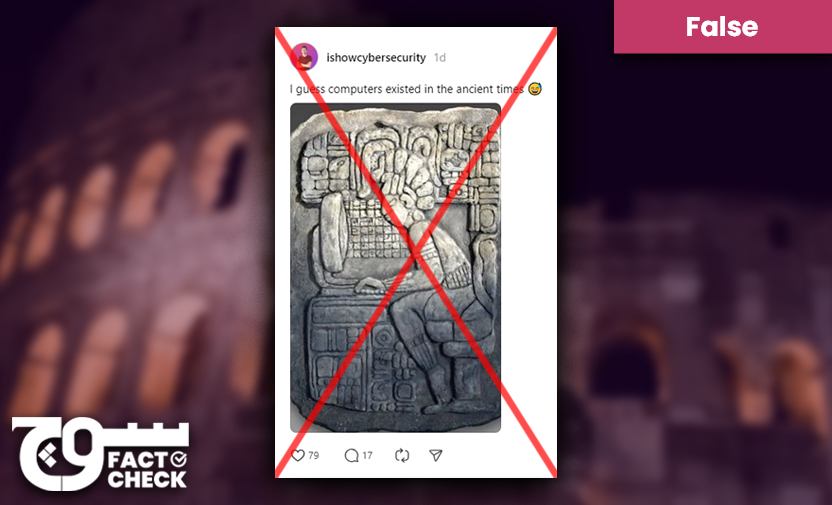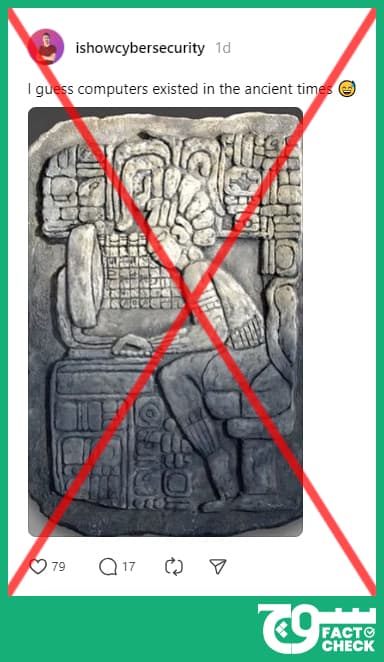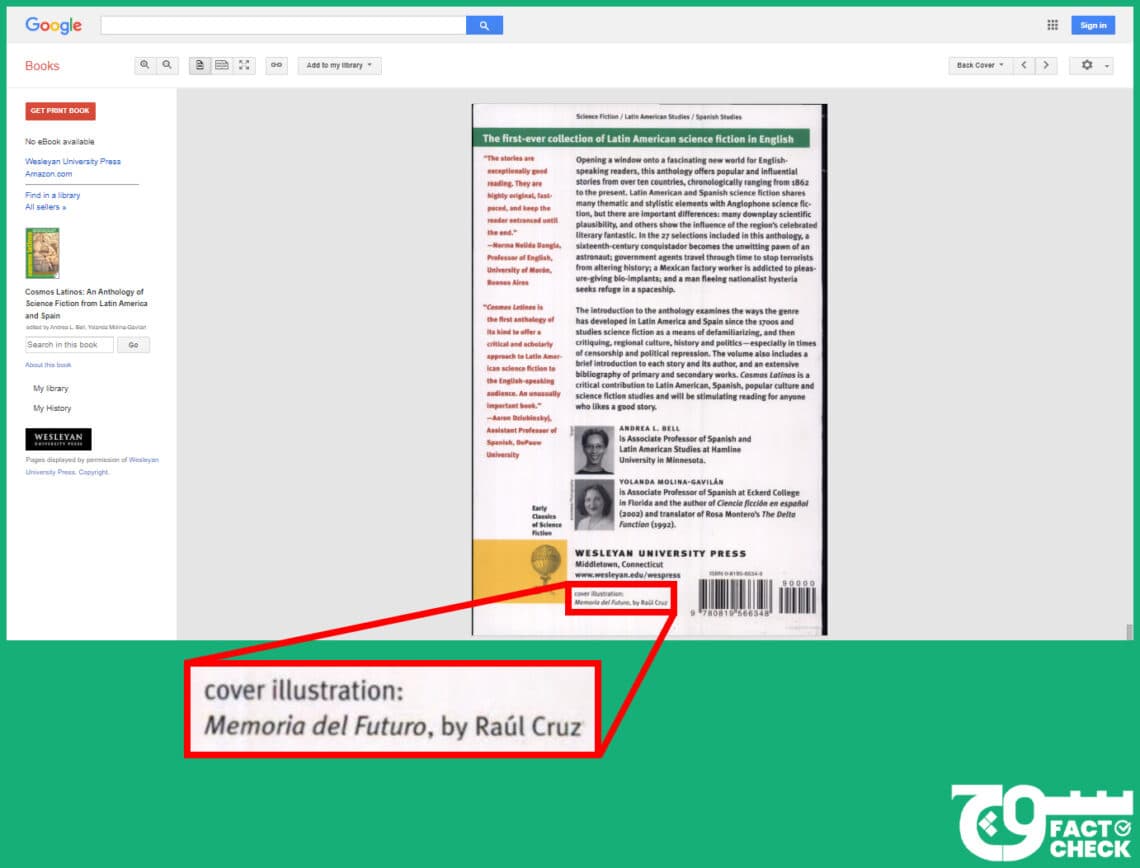
Claim: A stone tablet depicting a man in front of a computer proves technology existed in “ancient times”.
Fact: The stone tablet is not authentic but an artwork created by Mexico-based illustrator, Raul Cruz.
On 14 May 2024, Threads user @ishowcybersecurity posted (archive) an image of what appears to be a stone tablet depicting a man using a computer, with the following caption:

“I guess computers existed in the ancient times 😅”
Fact or Fiction?
Soch Fact Check reverse-searched the image and, using Google Lens, found that it appears on a website called FoundSF, which, according to its ‘About’ section, is “a digital history archive managed by Shaping San Francisco”.
According to the page, the write-up, which includes the picture, was originally published in El Tecolote — a San Francisco-based newspaper — on 6 September 2018. Both websites have labelled the image as “‘Memoria del Futuro’. Raúl Cruz / RACRUFI.”
This was corroborated by a second Google Lens result: the page of Raul Cruz on ArtStation, a showcase platform for artists, where the artwork is named Memory of the Future — or ‘Memoria del Futuro’ in Spanish— that is made from resin and fibreglass, with dimensions of 55 x 40 centimetres.
Cruz also posted the artwork on his Instagram account (archive) on 5 September 2018, with the caption “Memoria del futuro, acrylic on fiberglass, 2015.” He shared the same on his Facebook page twice: once on on 14 August 2014, with the caption “MEMORIA DEL FUTURO,” and a second time on 6 April 2017, with the caption “Dimensionales del artista plastico #RACRUFI [Dimensions of the Fine Artist #RACRUFI].”
Using the search term “Memoria del Futuro Raúl Cruz” on Google, Soch Fact Check came across a link to Strange Horizons, a “weekly magazine of and about speculative fiction” that features Cruz’s art in its 9 October 2006 issue. It describes Cruz as a “freelance illustrator [working] since 1983 for a variety of clients” in Mexico, the US, and Argentina.
Cruz’s artwork is “inspired by Aztec and Mayan art” and “mixes traditional elements with science fiction and fantastic themes” the description adds. The artist illustrates for “children’s books, covers for books and magazines, posters, trading cards, and storyboards, and also works in stage design,” it states, adding that he “has developed his own techniques using digital and traditional media such as Adobe Photoshop, 3D Studio, acrylics, and collage”.
The X (formerly Twitter) account ‘Fake History Hunter’ also used the same sources to debunk the claim here in February 2024.
Soch Fact Check also found that the image appears in a 2 March 2012 post on a WordPress blog called “MicroBeez Negocios Para Indocumentados [MicroBeez Businesses for Undocumented People]”. The blog’s description, when translated into English, says it is “a microbusiness that directs undocumented people living in the United States to process the necessary documents to legally open businesses”.
Interestingly, on the other hand, we also found two references — here and here — to the same artwork where the year of origin is mentioned as 1990.
However, Soch Fact Check was unable to verify if the artwork is indeed from 1990 and has reached out to Cruz for confirmation. This article will be updated on receiving a response from the artist.
Additionally, the image had previously gone viral in India in 2022 and 2023 with the claim that it showed an “engraving” of a computer in a Lalgiri temple built by the Pallava King Nrusingh II (or Narasimhavarman II) about 1,400 years ago.
At that time, Newschecker, The Logical Indian, Alt News, and FACTLY investigated the claim and found that the visual was also used as the cover of a 2003 book called “Cosmos Latinos: An Anthology of Science Fiction from Latin America and Spain (Early Classics of Science Fiction),” translated and edited by Andrea L. Bell & Yolanda Molina-Gavilán and published by Wesleyan University Press in Middletown, Connecticut, US.
When we searched for a digital copy of “Cosmos Latinos” and found it on Google Books, we were able to confirm that the illustration on its cover is credited to Cruz.

Soch Fact Check, therefore, concludes that the stone tablet is not an authentic historical artefact but an artwork created by Raul Cruz.
Virality
The claim was shared here, here, here, here, and here on Facebook. It was also shared here and here on X, where it received 638,700, 150,000, and 8,200 views, respectively.
Other websites also published it here, here, here, and here.
Conclusion: A post on Threads claiming that a stone tablet is an authentic historical artefact is actually an artwork created by Mexico-based illustrator, Raul Cruz.
Background image in cover photo: Jakob Owens
To appeal against our fact-check, please send an email to appeals@sochfactcheck.com
